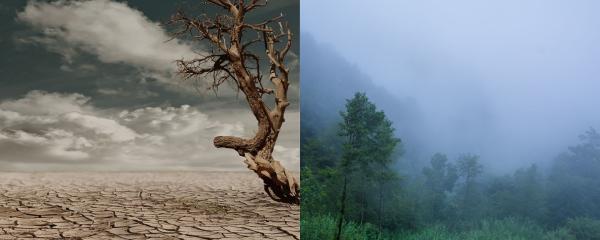
IIT Palakkad study shows how different indices used to predict drought combined with effects fof climate change can lead to different climate predictions for the future

IIT Palakkad study shows how different indices used to predict drought combined with effects fof climate change can lead to different climate predictions for the future
Every passing day we are exposed to a cocktail of chemicals through medicines, cosmetics, pesticides, aerosols, gaseous emissions, pollens, etc. Many of these affect our health; some are allergens, while others could be carcinogens or cause fatal diseases. Although some products are tested to ascertain their safety for human use, the process is tedious, time-consuming and involve testing on animals.
A team of researchers from Indian Institute of Science (IISc), Bengaluru, Max Planck Institute for Intelligent Systems, Stuttgart, Germany, and University of Stuttgart, Stuttgart, Germany have developed a novel silver nanoparticle-graphene hybrid photodetector device with an increased ability to detect Ultraviolet light.
There exists a theory among economists called the ‘pollution haven hypothesis’ that talks about how foreign investments are related to environmental regulations. It states that companies from developed countries often seek to set up manufacturing units in developing countries not only because they can obtain cheap labour and resources, but also because environmental regulations in these countries are usually lenient, reducing the cost of compliance. But does empirical data support this hypothesis?
Researchers at Indian Institute of Technology Bombay (IITB), Mumbai, have developed a new minimum opportunity cost targeting algorithm (MOCTA) to help organizations and institutions select the right environmental and conservation projects to pursue.
Researchers from Babasaheb Bhimrao Ambedkar University, Lucknow, Institute of Urban Environment (IUE), Chinese Academy of Sciences (CAS), Xiamen, People’s Republic of China, and CSIR- Indian Institute of Toxicology Research, Lucknow have studied the wastewater produced from tanneries and analyzed the pollutants present in it. Their study reveals an immediate threat to the environment from the recalcitrant pollutants present in the wastewater.
After the Microhyla laterite that was described from Manipal in 2016, scientists have found another new narrow-mouthed frog from the city centre of Mangaluru, in coastal Karnataka.
Researchers from Vellore Institute of Technology (VIT) University, Vellore in Tamil Nadu, have synthesized novel compound made of lead sulphide quantum dots coated with anti-oxidants or vitamins, which could aid in live imaging cells.
Researchers from the Indian Institute of Technology, Delhi and the Fortis Memorial Research Institute, Gurgaon, have devised a new way to automatically differentiate between inner and outer breast tissue using Magnetic Resonance Imaging or MRI in breast cancer patients.
A colourful platter never fails to stimulate your appetite, right? The moment your eyes sense so many dishes laid out beautifully, the stomach starts to growl, and you want to grab a bite! But, you owe most of the food that you eat to insects that pollinate the grains, vegetables and fruits, thus ensuring there is food for all. Have you ever thought how these insects, which feed us, find their food? How do they decide which flower to forage? Do they also look for colours like us?
Researchers from Czech Technical University in Prague, Czech Republic, Indian Institute of Technology, Delhi, India, and Northumbria University, UK are studying relay-assisted visible light communications to improve the indoor coverage of mobile network connectivity. Their new technique turns mobile phones into relays, forwarding data from the transmitter to the end user.